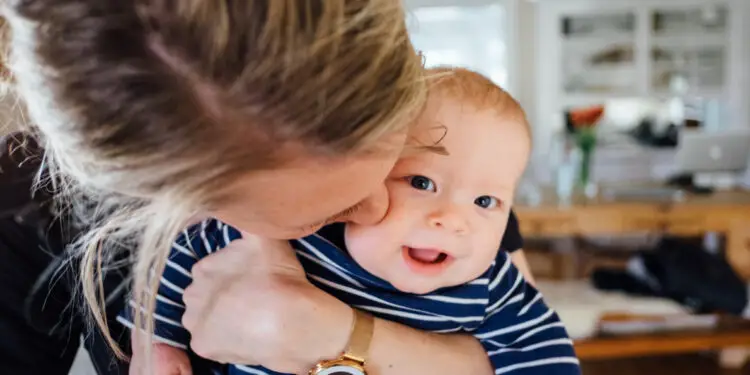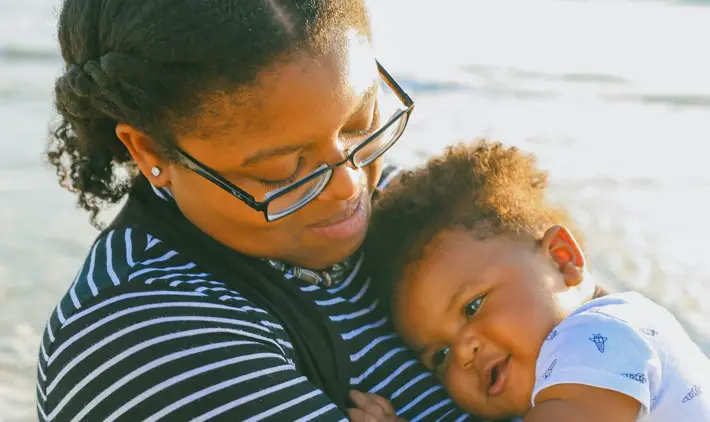Your Ultimate Guide To Attachment Theory

This post is developed in partnership with BetterHelp.
Are you anxious in relationships? Do you fear being abandoned? Or, conversely, do you fear getting too close? If so, you may wonder exactly why you developed these behaviors and fears and why they are making your relationships so challenging. According to attachment theory, the answer may lie in how well you connected with your parents in childhood.
But what is attachment theory, and how does it apply to our lives? This article serves as your ultimate guide to understanding this crucial theory and how it influences our relationships.
What Is Attachment Theory?
You know the stereotype of people blaming their mothers in therapy for all their problems? When it comes to attachment, there may be some truth to that. It turns out that your relationships are significantly affected by how you interacted with your caregivers in infancy.
For example, if you had a healthy attachment to your caregivers, you are more likely to develop healthy friendships and relationships. If you didn’t, then you may have lifelong attachment issues that can affect your ability to establish healthy connections.
Attachment theory is the study of this phenomenon. This theory states that the behaviors that a young child exhibits with their caregivers will determine how they interact with their partners in the future.
A healthy attachment will form if the baby has a healthy connection with their parents. In order for this to occur, the child must have the autonomy to explore their world but also occasionally come back to their parent for support and reassurance. This shows that they are developing a healthy individuality but also have the love and support they need when in distress. This experience in childhood helps encourage secure attachment behaviors, which make it much easier to create fulfilling relationships in adulthood. If your childhood experience was a significant deviation from this, then you may develop an insecure attachment instead.
If you wish to learn more about attachment theory, you can find more information at the link below:
https://www.betterhelp.com/advice/attachment/
Now, let’s discuss the four types of attachment.
The Four Types Of Attachment
Depending on your childhood experience, you will have developed one of four attachment types. Though the ideal case is that you create a secure attachment to your caregivers and partners, life is rarely so easy. This means many people develop one of the three insecure types–avoidant, anxious, or fearful. Read on to learn the basics of each of the four types of attachment to see which one you may have.
Secure Attachment
As mentioned earlier, secure attachment is the ideal form of attachment. Developing this style means that a person had a healthy connection with their caregivers in childhood. Their caregivers allowed them room to explore and interact with the world around them, but we’re always available to help the child when in distress. This allowed the child to develop a strong emotional foundation and to have trust in the world.
If you are unsure if you have a secure attachment style, here are some common signs:
● You have healthy self-worth that is not dependent on your relationship status.
● You don’t fear being yourself in your relationship.
● You can express your needs, wants, and boundaries in a healthy manner.
● You don’t become anxious when separated from your partner.
● You are supportive of your partner and have no problem receiving support and comfort as well.
● You aren’t afraid of emotional intimacy.
● You find healthy ways to manage conflicts.
● You have the resilience to work through challenges in your relationships and other aspects of life.
Avoidant Attachment
Those with an avoidant attachment style have a fear of intimacy and connection. Because of this, they rarely seek out meaningful relationships as they don’t want to experience the emotions and vulnerability involved. On the contrary, they may feel stifled in a relationship, so they may remain single or just date casually.
This attachment style typically forms when caregivers either neglect or were inconsistent in caring for their child’s emotional needs. The child grew up not trusting their parents and therefore learned to push down their emotions. As a result, they are afraid to be vulnerable and emotional, so they avoid any situation that would make them so.
If you are unsure if you have an avoidant attachment style, here are some common signs:
● You fear entering a relationship.
● You are extremely independent.
● You withdraw from any expression of love or affection.
● You are uncomfortable with being vulnerable or emotional.
● Your partners describe you as “closed off.”
● If you do enter a relationship, your partner is just as independent as you and also tends to be emotionally withdrawn.
Anxious Attachment
On the opposite side of the spectrum are people with an anxious attachment style. They constantly fear abandonment and need continuous reassurance and validation. As a result, they are often very clingy and emotional. People with this attachment style live with low self-esteem and depend on their partners to develop their self-worth.
As with avoidant attachment styles, this style develops when a caregiver is inconsistent with meeting their child’s needs. As a result, the child learns not to trust adults, as they can abandon or neglect them at any moment. Therefore, they become very clingy, fearing that if they let go, their partner will never come back. Ironically, their clingy behavior often pushes partners away.
If you are unsure if you have an anxious attachment style, here are some common signs:
● You are in constant fear that your partner will abandon you.
● You need constant validation and reassurance.
● Your self-worth is dependent on your relationship status.
● You struggle with honoring your partner’s boundaries.
● You become obsessed with your partner and the relationship and allow it to take over your life.
Fearful/Disorganized Attachment
A fearful attachment (also known as disorganized attachment) combines the previous two attachment styles. Some with this attachment simultaneously crave constant affection but are also afraid of it. This may result in an emotional push-pull system in the relationship that can be exhausting and erratic.
This style typically develops in homes where the caregivers were unreliable, neglectful, or even abusive.** Since the child could never know what to expect from their parents, their attachment to them became confused and disorganized. As a result, the child grows up craving love and connection but also fears it. As a result, they don’t know how to create a healthy relationship as they don’t know what to expect, nor do they know how to behave themselves.
**If you are a survivor of domestic violence or currently are experiencing it, please call the National Domestic Violence Hotline at 1-800-799-SAFE (7233) for help and resources.**
If you are unsure if you have an fearful or disorganized attachment style, here are some common signs:
● Your relationships are confusing and erratic.
● Your emotions towards your partner vary wildly from day today.
● You may be abusive or manipulative towards your partner since that’s how your parents treated you.
● You live with a mental health condition or PTSD as a result of childhood trauma.
How To Use This Information
Understanding your attachment style is essential to start developing healthy relationships. It can be tempting to always blame previous partners for your problems, but if there are certain patterns in your relationships, you may be partly responsible.
Having an insecure attachment style is not your fault, though. This attachment style formed because your parents were neglectful or simply could not attend to your needs consistently. An insecure attachment style is not a life sentence. By being aware of your behavior and attachment, you are already well on the way to improving yourself and your relationships. Through further mindfulness, inner work, and therapy, you can create a more secure attachment and develop happy and fulfilling relationships.











